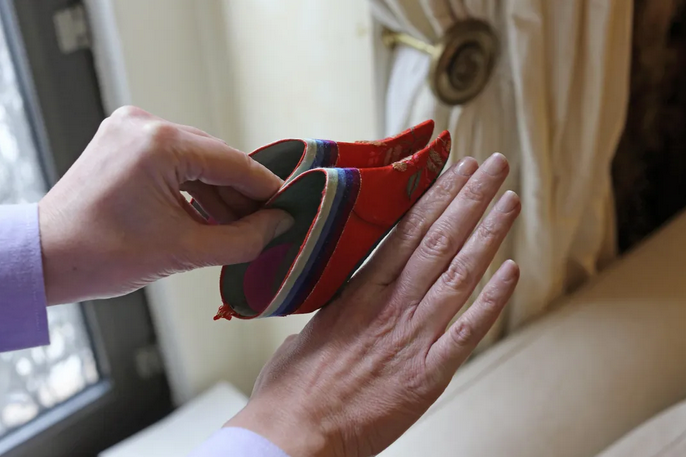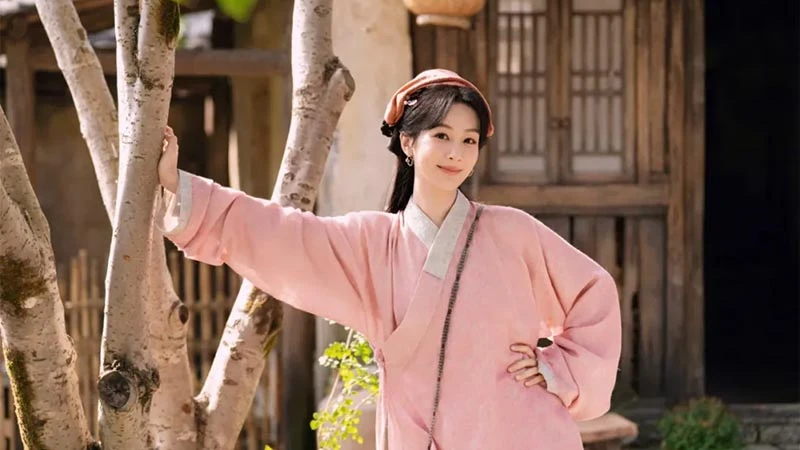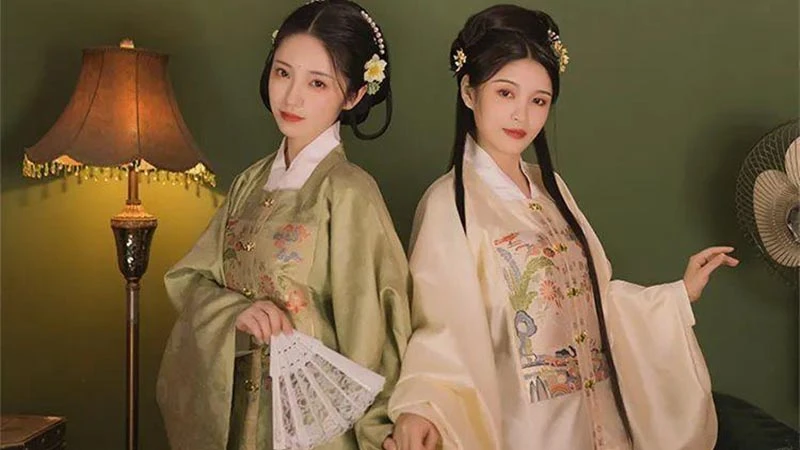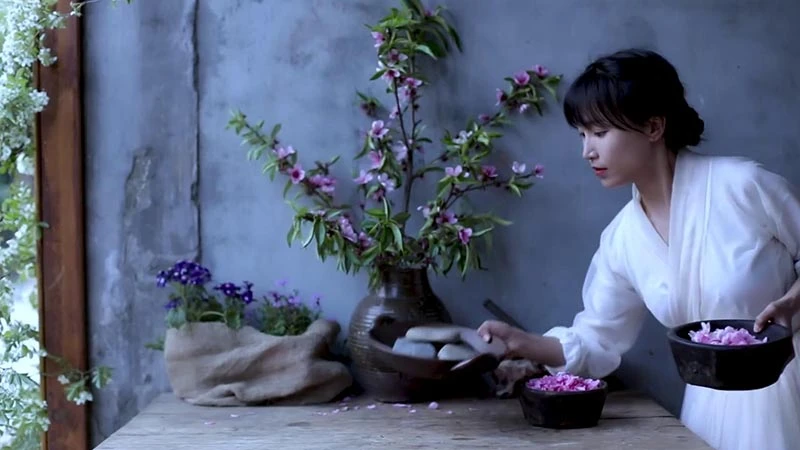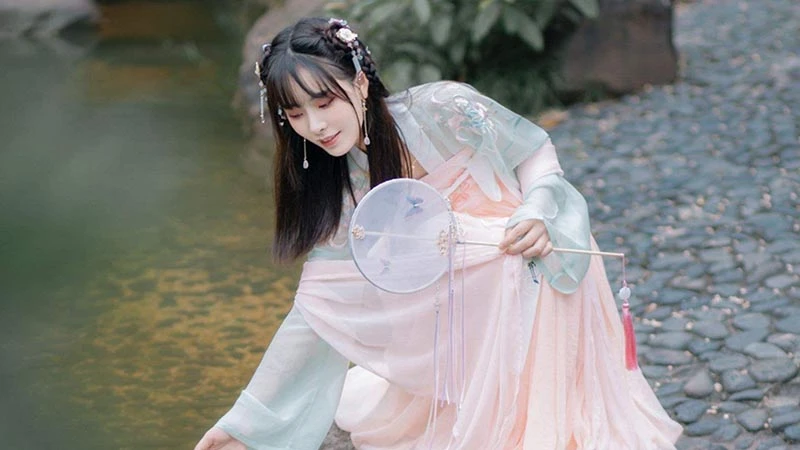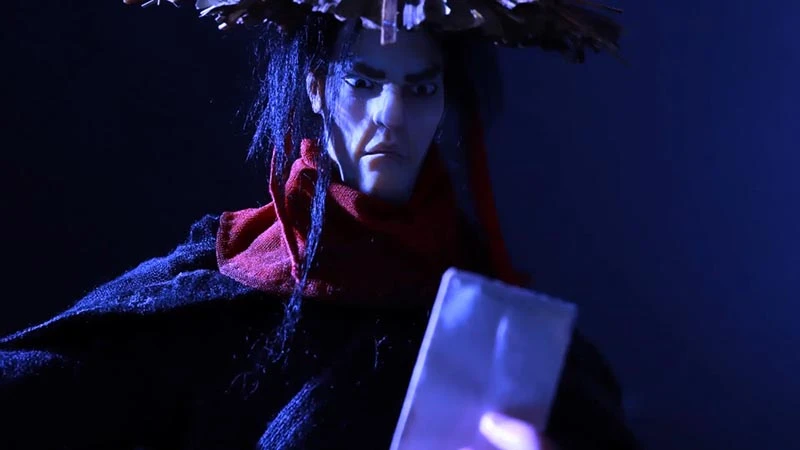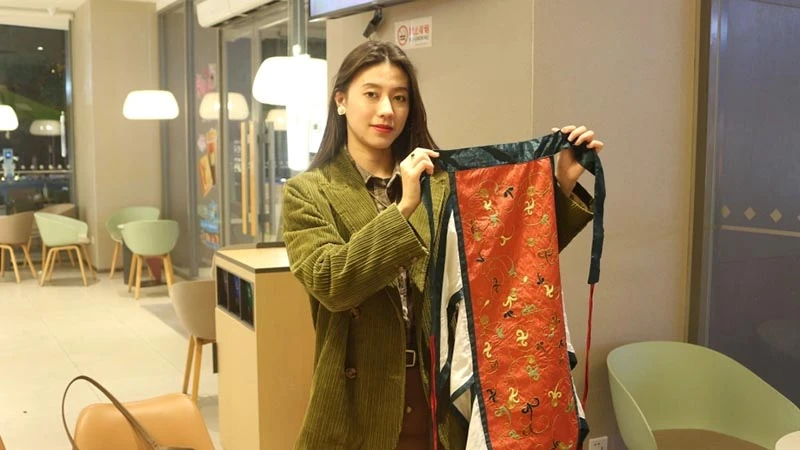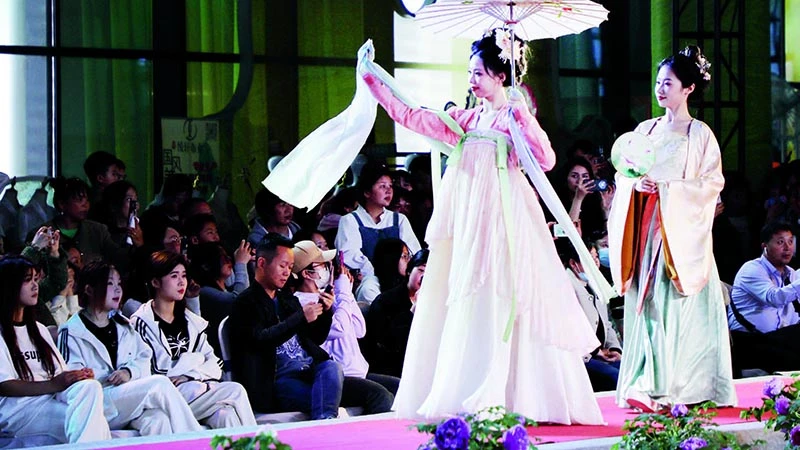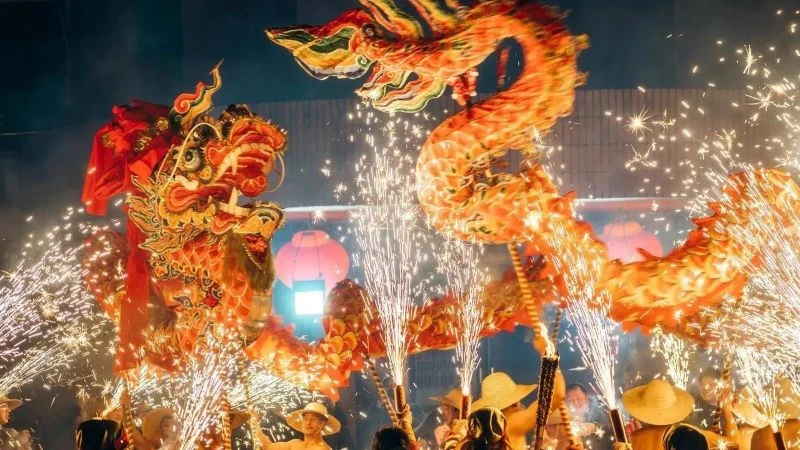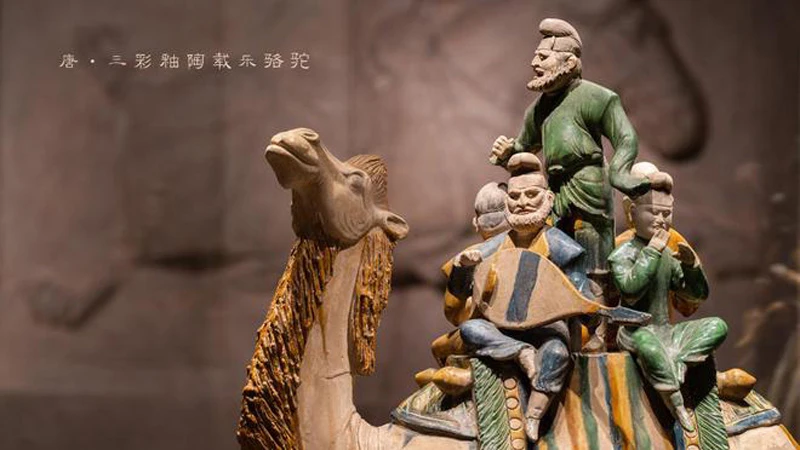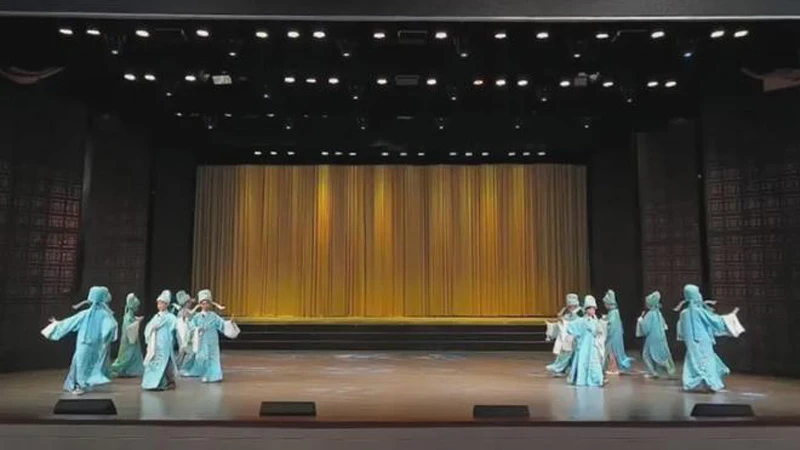Article
搜索结果:
-
How Hanfu’s Bold Color Can Transform Your Wardrobe
As spring breathes life into nature, fashion enthusiasts seek fresh ways to mirror the season’s vibrancy. While pastels and florals dominate Western spring collections, a centuries-old Chinese tradition offers an audacious alternative: Hanfu, the traditional attire of the Han Chinese. With its fearless embrace of color, Hanfu challenges modern fashion’s rigid rules—proving that spring’s exuberance can be captured not through restraint, but through joyful abundance. Part 1: Hanfu’s Chromatic Rebellion In recent years, my journey into Hanfu evolved from buying curated sets to DIY creations. What stunned me most was its radical approach to color. Combinations deemed “clashing” in modern fashion—think pink paired with chartreuse or deep green against magenta—somehow harmonize effortlessly in Hanfu. Even seemingly discordant hues like lavender and tangerine or sky blue and neon orange coalesce into striking ensembles. These designs defy the “three-color rule” (a Western styling mantra) not through chaos but through calculated artistry. The secret lies in Hanfu’s structural DNA: loose, planar cuts allow hues to flow freely across uninterrupted fabric planes, while layered skirts and billowing sleeves create a kinetic harmony that feels both ancient and avant-garde. Part 2: Why Modern Fashion Fears Color—And Hanfu Doesn’t The “three-color rule” exists for practicality: modern… -
The Role of Hanfu in Chinese Literature and Classical Texts
Hanfu, the traditional attire of the Han Chinese, is more than just a piece of clothing—it is a symbol of culture, identity, and history. Throughout Chinese history, literature and classical texts have played a crucial role in shaping and preserving the significance of Hanfu. From ancient poetry to Confucian philosophy, Hanfu is often depicted as a marker of virtue, status, and national pride. But how exactly has Hanfu influenced Chinese literature, and what role does it play in classical texts? Let’s dive into the intricate relationship between Hanfu and Chinese literary traditions. The Symbolism of Hanfu in Classical Chinese Literature Hanfu is not just a form of dress—it is a representation of Confucian ideals, social order, and aesthetics. In classical Chinese literature, Hanfu is often used as a symbol to convey deeper meanings about a character’s identity, social status, and moral values. Hanfu as a Reflection of Status and Virtue In many ancient Chinese texts, clothing is an essential marker of a person’s role in society. The “Book of Rites” (礼记), one of the Confucian classics, describes in detail the appropriate attire for different social classes and occasions. Hanfu was more than fashion—it was a reflection of an individual's virtue… -
How did the Hanfu change per dynasties?
The Hanfu worn in different dynasties, though similar, ranged in its own characteristics based on the dynasty. The article I am writing will hopefully help you understand the similarities and differences between clothing and hanfu throughout the timeline of dynasties. I will also show you how it has changed compared to modern hanfu. Xia (Hsia) Dynasty ca. 2100-1600 BCE Shang Dynasty ca. 1600-1050 BCE Zhou (Chou, pronounced "Joe") Dynasty 3.1 Western Zhou (ca. 1046-771 BCE) 3.2 Eastern Zhou (ca. 771-256 BCE) Spring and Autumn Period (770-ca 475 BCE) Confucius (ca. 551-479 BCE) Warring States Period (ca. 475-221 BCE) 221-206 BCE Qin (Ch'in, pronounced "chin") Dynasty/ Capital: Chang'an, present-day Xian Qin Shihuangdi dies, 210 BCE 206 BCE-220 CE Han Dynasty Western/Former Han (206 BCE-9 CE) Capital: Chang'an (present-day Xian) Confucianism officially established as basis for Chinese state by Han Wudi (r. 141-86 BCE) Eastern/Later Han (25-220 CE) Capital: Luoyang 220-589 CE Six Dynasties Period Three Kingdoms (220-265 CE) Jin Dynasty (265-420 CE) Period of the Northern and Southern Dynasties (386-589 CE) Period of disunity and instability following the fall of the Han; Buddhism introduced to China Cao Wei, Shu Han, Dong Wu 581-618 CE Sui (pronounced "sway") Dynasty Capital: Chang'an (present-day Xian)… -
Footbinding - The High Price of Beauty
Foot binding (simplified Chinese: 缠足; traditional Chinese: 纏足) was the Chinese custom of breaking and tightly binding the feet of young girls to change their shape and size for aesthetic purposes. Feet altered by footbinding were known as lotus feet and the shoes made for them were known as lotus shoes. It has been estimated that by the 19th century 40–50% of all Chinese women may have had bound feet, rising to almost 100% among upper-class Han Chinese women. The lotus flower, a symbolically significant flower across Eastern countries and religions, is associated with beauty, enlightenment and rebirth. Every morning the lotus flower emerges elegant and pure from muddy waters. In Buddhism, the white lotus flower is symbolic of Bodhi, or, being awakened. Thus the lotus is also a symbol of desire and fertility. History: Footbinding was an extremely painful and debilitating cultural practice, existing in China from the 10th century until the establishment of the People’s Republic of China in 1949. First practice was documented in the Southern T'ang Dynasty (937-956 AD), although some poetry from the Han Dynasty (206 BC-AD 220) suggests that small feet were culturally preferred before documentation of the custom. The exact origin of… -
From Tradition to Trend: Evolution of Chinese Fashion
Fashion is a reflection of history, culture, and identity, evolving alongside society. Chinese fashion, in particular, has undergone a remarkable transformation, shifting from traditional attire to modern, globally influenced styles. This evolution is deeply connected to social changes, economic growth, and cultural exchanges with the world. Understanding how Chinese fashion has changed over time provides valuable insights for students interested in history, art, and design. For centuries, China’s clothing styles were shaped by dynastic rules, Confucian values, and regional influences. The Hanfu, Tang suit, and Qipao symbolize different eras, each with unique materials, patterns, and meanings. These garments carried social significance, often indicating class, status, and occupation. However, as China opened its doors to modernization and globalization, traditional clothing slowly gave way to contemporary designs influenced by Western trends. Today, fashion in China blends tradition with innovation, creating styles that appeal to both young students and professionals. The rise of street fashion, sustainable clothing, and high-end Chinese designers has positioned China as a fashion powerhouse. Many students now explore this transformation in college, studying fashion history, design, and business as part of their assignments. This shift not only reflects aesthetic changes but also highlights the deeper impact of culture on… -
Yang Zi Stuns in Ming Dynasty-Inspired Hanfu
Chinese actress Yang Zi (杨紫), known for her versatile roles in television dramas, has once again captured the public’s attention—this time, not for her acting, but for her impeccable fashion sense. Recently, the star shared photos of herself dressed in Hanfu, traditional Chinese clothing, to celebrate the Lantern Festival. The images, which quickly went viral, showcased Yang Zi in two stunning Ming Dynasty-inspired outfits, sparking discussions about the modern revival of Hanfu and its place in everyday fashion. A Nod to Ming Dynasty Elegance Yang Zi’s Hanfu choices are rooted in the Ming Dynasty (1368–1644), a period known for its rich cultural heritage and distinctive fashion. The two outfits she wore are variations of aoqun (袄裙), a traditional style consisting of a top (ao) and a skirt (qun). The first ensemble features a soft pink ao with a crossed collar, paired with a gray pleated skirt. The second look is a refreshing green ao with a front-opening design, layered over a subtle red undergarment, creating a harmonious yet striking color contrast. What makes Yang Zi’s outfits stand out is their accessibility. Unlike the elaborate Hanfu often seen in historical dramas, her choices are tailored for modern wear. The muted tones—pink,… -
Xi'an's Hanfu: Youth Embrace Ancient Chinese Cultural Aesthetics
The vibrant city of Xi'an, historically known as the cradle of Chinese civilization, has witnessed a cultural renaissance of sorts. In recent years, the streets and landmarks of this ancient city have become a living museum of traditional Chinese fashion—particularly Hanfu, the traditional clothing that dates back to the Han Dynasty. What was once considered an artifact of history has now made a bold return to the streets, worn by young people in daily life and by tourists looking to engage with Chinese heritage in a deeply immersive way. This resurgence has sparked interest worldwide, making Xi'an one of China's leading cultural hubs. In this article, we delve into the multifaceted role of Hanfu in Xi'an, its relationship to cultural confidence, and the broader implications for China's cultural identity today. Xi'an, known as the ancient capital for over 13 dynasties, is a city where history and modernity collide. For thousands of years, the city has been a center of political, cultural, and economic power in China. The Han and Tang dynasties, in particular, left an indelible mark on the city’s legacy, contributing to an atmosphere filled with ancient cultural relics and awe-inspiring architectural wonders. With the rise of Hanfu,… -
Li Ziqi Wears Hu Bugui’s Viral Hanfu
A Fortuitous Spotlight When Henan TV released its Chinese New Year Gala teaser on January 15th, a particular moment sparked excitement across social media. Internet sensation Li Ziqi (李子柒) appeared in a dazzling red modified Hanfu, holding a lion lantern, exuding an ethereal beauty. Astute fans soon connected her stunning outfit to a popular design sold on an e-commerce platform—a creation by Hu Bugui (胡不归), a rising star in Hanfu design. Hu, both the shop owner and designer, hadn’t anticipated this moment of fame. “It was a complete surprise,” she admitted in an interview. “We never collaborated with Li Ziqi, but seeing her wear my design felt surreal.” Within hours, her store was inundated with inquiries, with buyers scrambling to own what was now dubbed the "Li Ziqi Hanfu." The Story Behind the Design The Hanfu in question, a three-piece modified Ming-style ensemble named Yu Nian (余年), has been one of Hu’s bestsellers. Priced at around 1,400 RMB, it features a red jacket inspired by palace walls, a high-necked blouse, and a horse-face skirt embroidered with golden characters reading “岁岁长安皆有所盼” (Hopes for everlasting peace and prosperity). Hu designed it three years ago with the theme of New Year festivities in… -
Hanfu Blogger Shares Cultural Exchange Journey
In recent years, the ancient beauty of Hanfu, the traditional attire of China, has transcended its niche roots to become a global sensation. With hashtags like “Sharing the Beauty of Hanfu with the World” trending across social media, Hanfu has emerged as a symbol of cultural pride and a bridge between history and modernity. This revival is fueled by passionate advocates, like influencer Zhou Sisi (周思思) better known as “Si Miao (思喵) hose journey into the world of Hanfu exemplifies the blend of history, art, and personal expression fueling this movement. Zhou Sisi, a renowned Hanfu blogger with over 400,000 followers across platforms, recalls her first brush with Hanfu as a fascination with its aesthetic appeal. However, her interest deepened as she delved into the history behind these garments. “When I first started wearing Hanfu, I only admired its beauty,” Zhou explained. “But as I explored its historical roots, I became captivated by the eras it represented.” Zhou’s preferred styles include Tang and Ming dynasty recreations, each offering unique insights into the people and culture of those periods. For instance, Tang dynasty Hanfu, with its flowing and inclusive designs, reflects the openness and grandeur of one of China's most cosmopolitan… -
Lantern Blade: A Dark Fantasy Revival of Stop-Motion Anime
For a generation raised on the sleek aesthetics of 2D hand-drawn and 3D CGI animation, stop-motion might seem like an antiquated relic of the past. Unlike its counterparts, stop-motion is built on tangible artistry: puppets, clay figures, and mixed materials manipulated frame by painstaking frame. The result? A distinctive, textured realism unmatched by digital techniques. In China, the legacy of stop-motion animation once flourished with studios like Shanghai Animation Film Studio producing classics such as Magic Brush Ma Liang (神笔马良) and The Story of Avanti (阿凡提的故事). However, since the rise of CGI in the 1980s, stop-motion animation has become a niche art form globally, celebrated only by enthusiasts or explored in experimental shorts. Breaking this lull, Tencent Video’s Lantern Blade (灯笼刀) reintroduces audiences to the magic of stop-motion animation, this time through a gritty, action-packed lens. Adapting the cult-favorite comic of the same name, Lantern Blade blends martial arts, cosmic horror, and Western-esque atmospheres into a striking 67-minute trilogy. A Blade that Glows in the Dark Lantern Blade opens in a shadowy, mythical world steeped in Lovecraftian lore. The story revolves around an enigmatic warrior named Lantern Blade, whose titular weapon, a lantern-clad sword, glows in the presence of undead… -
Feng Luo Jiang Hu: A Love Beyond Worlds
Chapter One: When Fiction Becomes Reality Imagine waking up one day and finding yourself trapped in a world you created—a world of danger, deception, and romance. That’s the fate of Meng Xiaotang (孟小棠), a popular web novelist, who accidentally gets pulled into the pages of her own martial arts story. Played by Ke Ying, Meng Xiaotang’s adventure begins when a demanding editor rejects her countless revisions for the male lead of her latest novel. Frustrated, she deletes the character “Ye Wuchen (叶无尘),” the story’s chivalrous hero. This simple act, however, triggers an unexpected twist: Meng is sucked into her book’s universe, becoming the infamous villainess, Feng Nanxi (凤南汐). Feng Nanxi is no ordinary antagonist; she’s a femme fatale wielding the unparalleled yet elusive “Cloud Absorption Technique.” Unfortunately for Meng, she cannot summon its power. Worse still, her character is hunted by everyone in the martial arts world. As the clock ticks and danger looms, she must navigate her fictional universe in search of a way back home. Chapter Two: Villains, Heroes, and Intrigue In a bid to strengthen her odds, Feng Nanxi embarks on a peculiar mission—choosing a “male companion” from a lineup of eligible candidates. By sheer accident, she… -
A Special Photo Event for Elders
In the heart of Changning, an endearing event brought together the elderly residents of Dongbang Residential Area and volunteers from the Bank of Communications Changning Branch for a unique experience. The "Flourishing Flowers" themed photo session offered a chance to relive fond memories and create new ones, as 50 elderly residents posed for elegant portraits in traditional Chinese attire. The event, which captured moments of joy and nostalgia, brought much-needed warmth and happiness to the lives of the elderly, highlighting the importance of community, memory, and love. A Day of Glamour and Laughter The Dongbang community center transformed into a glamorous photo studio for the day, as volunteers and participants created a festive atmosphere with vibrant lanterns and colorful streamers. The air was filled with the cheerful buzz of conversations and the hum of preparations, with volunteers working hard to ensure that the elderly residents felt pampered and appreciated. Some elderly residents wore their cherished qipaos and tangzhuang (唐装, traditional Chinese attire), while others relied on the kindness of neighbors who lent them their clothes and accessories for the occasion. One of the most touching moments came when 76-year-old Mr. Chen and his 69-year-old wife posed for a “wedding photo”… -
Breathing New Life into Wei-Jin Hanfu
In a world increasingly captivated by modern fashion, a young designer at Wuhan Textile University is proving that ancient styles can be just as enchanting. Li Yanjun (李艳君), a graduate student with a passion for traditional Chinese culture, has recreated the flowing garments of the Wei-Jin period, inspired by the legendary Luo Shen Fu painting (洛神赋图) by Gu Kaizhi (顾恺之). Her meticulous work, showcased in a serene photoshoot at the Qingchuan Pavilion (晴川阁), has garnered widespread acclaim, with her video on Bilibili amassing over 14,000 views. A Vision of Wei-Jin Hanfu Li's recreation draws directly from the Luo Shen Fu painting, a celebrated Eastern Jin masterpiece illustrating the romantic tale of Cao Zhi and the goddess Luo Shen. The attire, known as the "zaju chuishou" (杂裾垂髾) ensemble, includes a flowing daxiushan (大袖衫, large-sleeved robe), a banbi (半臂, short-sleeved garment), a biji (蔽膝, knee cover), and a ruqun (襦裙, skirt). Li spent 40 hours intricately embroidering a crimson biji with starry cloud patterns, a design chosen to reflect the ethereal nature of the goddess. “The biji is more than just an accessory,” Li explained. “Its triangular drape was key to the elegance and symbolism of Wei-Jin attire, marking status and adding… -
Dong Mingzhu's Hanfu Experience in Cao County
It was an ordinary day in the historic streets of Luoyang when Dong Mingzhu (董明珠), a celebrated Chinese business leader, donned her first Hanfu—a pale blue Ming-style ensemble that caught the eyes of onlookers. Just eight days later, she returned, this time wearing a regal Tang dynasty outfit that matched her commanding presence. Accompanied by her friends, each draped in their chosen styles, Dong’s adventures became a viral moment for Hanfu lovers across China. While Dong’s choice in Hanfu showcased her unique personality, the quiet star of her story was an unassuming county in Shandong—Cao County (曹县). The Hanfu she wore, like many others seen in ancient-style photoshoots or festivals, originated from this lesser-known corner of China. The Small Town with Big Hanfu Dreams Located in southeastern Shandong, Cao County has undergone a cultural and economic metamorphosis. On the surface, it remains humble—far from the bustling touristy image one might expect. But venture fifteen kilometers to Daji Township, and you step into a thriving hub of creativity and entrepreneurship, where small shops handle everything from fabric cutting to digital printing and logistics. Once famous for its mass production of performance costumes, Cao County has emerged as a center of affordable… -
The Beauty of Fengcheng River Scenic Area
Nestled in the heart of Taizhou (泰州), Jiangsu, the Fengcheng River (凤城河) Scenic Area offers a unique blend of historical charm and natural beauty. As a nationally recognized 4A-level tourist destination, this scenic area draws visitors from all over the world with its captivating landscape and cultural richness. With its riverside setting, the Fengcheng River is not just a backdrop but an integral part of the region's identity, seamlessly connecting the past and the present. If you want to understand the essence of a city truly, there's no better place to begin than here, where time itself seems to flow through the water, telling stories of centuries gone by. The Fengcheng River area is defined by its relationship with water, offering a picturesque glimpse into the traditional Jiangnan water town. In this landscape, the famous "Wanghai Tower (望海楼)", an architectural landmark often called "the first tower of Jianghuai (江淮第一楼)," stands as the cultural centerpiece. Its elegant design and historical significance reflect Taizhou's deep cultural roots. As you explore this scenic area, you'll encounter a harmonious blend of natural beauty and human heritage that makes this location an unforgettable experience. Wanghai Tower and the Peach Garden Wanghai Tower, with its origins… -
The Heart of the Spring Festival: Family and National Pride
On December 4th, the Chinese Spring Festival was officially added to the UNESCO Representative List of Intangible Cultural Heritage. As one of the world's oldest and most significant celebrations, the Spring Festival reflects the deep-rooted values of family, unity, and harmony with nature. Its recognition by UNESCO signifies not only the global appreciation of this tradition but also highlights the universal values embedded within the festival that resonate with people across cultures. Through the Chinese New Year, China's rich heritage and cultural vitality are being shared with the world, fostering mutual understanding and respect among diverse peoples. The Spring Festival, or Chinese New Year, is the most important traditional festival in China. It is deeply rooted in the lives of the people, marking a new beginning and symbolizing new hope. According to the conventional Lunar calendar, the first day of the Chinese New Year means not only the start of a new year but also the collective desire for a new beginning—full of peace, prosperity, and happiness. Leading up to the festival, families clean their homes, hang spring couplets, prepare festive meals, and visit their ancestors' graves. These rituals connect the living to their heritage, reinforcing the importance of family… -
The National Museum: A Window to China's Past
The National Museum of China, one of the most prestigious cultural institutions in the country, offers an extraordinary opportunity to step into the past and witness the grandeur of China's ancient civilization. As visitors walk through its halls, they are greeted by monumental displays, including a massive granite relief of the legendary "Yu Gong Moves the Mountains," depicting the indomitable spirit of the Chinese people. This artwork symbolizes the relentless will and determination that have defined China's history, reflecting both the challenges faced and the triumphs achieved by its people over millennia. Inside the museum, history becomes tangible. The museum's exhibition, "Ancient China," allows visitors to walk through the ages, from the earliest signs of human civilization to the unified dynasties that shaped the cultural landscape of China. With 2026 carefully selected artifacts, including 521 top-tier national treasures, the exhibit provides a multi-dimensional experience of China's ancient heritage. Each artifact tells the story of China's journey from its humble beginnings to the flourishing civilization it is today. The Dawn of Civilization As visitors step into the "Ancient China" exhibit, they are immediately transported back hundreds of thousands of years. The museum's extensive collection begins with the dawn of human civilization… -
2024 Yangtze River Delta Cultural Expo
The fifth edition of the Yangtze River Delta Cultural Expo, held from November 22 to 25 at the National Exhibition and Convention Center in Shanghai, offered visitors a fascinating experience of China's diverse regional cultures. Beyond the three provinces and one municipality of the Yangtze River Delta, regions such as Yunnan, Guizhou, Sichuan, Inner Mongolia, Qinghai, and Jilin also participated, showcasing their unique traditions and cultural products. The Expo highlighted China's incredible array of non-material cultural heritage (Intangible Cultural Heritage, ICH) and creative cultural products, allowing visitors to explore the country's traditions without leaving the exhibition halls. With the creative integration of ethnic arts, traditional crafts, and culinary delights, the Expo provided a multi-sensory journey for everyone. Whether it was admiring intricate embroidery, trying traditional foods, or experiencing live performances of ancient rituals and dances, attendees were given a rare opportunity to witness the living history of each region. Immersive Cultural Experiences and Unique Handicrafts The exhibition spaces were not just places to observe but also to engage with the cultural treasures of China. One of the standout features of this year's event was the immersive exhibits, which allowed visitors to interact directly with the cultural heritage of different regions.… -
Xiangyang: A City of Endless Possibilities
Xiangyang (襄阳), a city nestled along the banks of the Han River, offers a fascinating blend of ancient heritage and cutting-edge modernity. With a history stretching over 2,800 years, Xiangyang is a city where visitors can experience the fullness of China's cultural tapestry. Walking through its ancient city walls, visitors can feel the weight of its rich history, while the gleaming industrial parks showcase the region's rapid technological and economic growth. Whether you're exploring tranquil rural landscapes or delving into Xiangyang's vibrant cultural tourism scene, this city is proving that the past and future can not only coexist but thrive together in a new era of development. Xiangyang's historical significance is vast and deeply interwoven with the stories of ancient China. The city was once the heart of the Jingchu culture (荆楚文化) and has long been a center of political and military power. It played a crucial role during the Three Kingdoms period, which is immortalized in China's literary classic "Romance of the Three Kingdoms", where a significant number of the novel's pivotal events unfolded. Xiangyang also boasts a rich collection of artifacts and monuments, with over 1,700 historical sites that have earned the city the title of "The First… -
Exploring the An Yue City, from Sichuan
Preserving An Yue's (安岳) Rich Cultural Traditions In the picturesque county of An Yue, nestled in the heart of Sichuan Province, an ancient cultural legacy continues to thrive. Known for its remarkable collection of intangible cultural heritage (ICH), An Yue is home to diverse traditions that have been passed down through generations. As the saying goes, "Cultural heritage is like an elderly sage, watching history pass by with helplessness, needing to be seen by the world." Indeed, the county's heritage, from stone carving to folk music and culinary delights, tells the stories of its people's ingenuity, labor, and creativity over millennia. An Yue is not just a place with rich history—it's a living testament to the creativity and resilience of its people. Here, ancient craftsmanship is not confined to museums but is actively preserved and practiced by the people, many of whom are proud inheritors of these traditions. From its famous stone carvings to its unique bamboo weaving and folk opera, the county's heritage is a treasure trove of art, craft, and story. An Yue's history as a "home of stone carvings" is unmatched, with over 100,000 ancient stone carvings scattered across the region. These stunning works are notable for…



